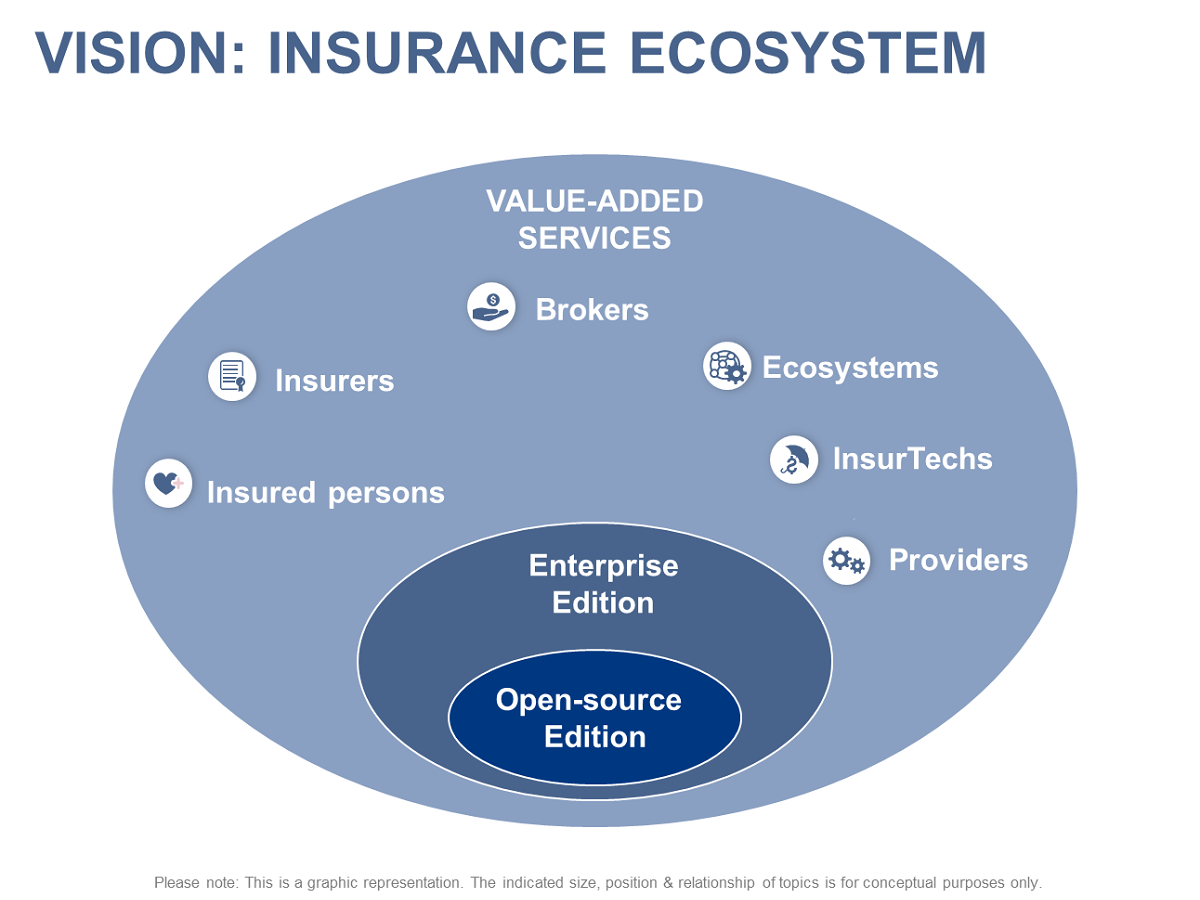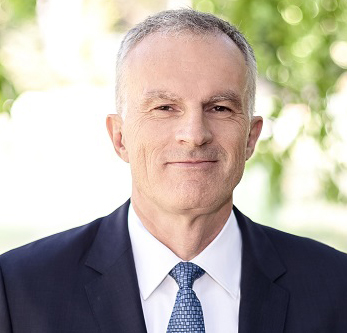Open Source makes the most of the entire industry’s intelligence
Allianz sets up open platform
Related links

The media have reported that Allianz is planning an open platform solution for other insurers. What’s that all about?
Christof Mascher: Over the past few years, we’ve developed a platform for ourselves, the Allianz Business System, that can be used in any line of the insurance business: property & casualty, life or health. That’s a major difference from other insurance systems available on the market. We’re now using ABS in 15 different countries, to manage more than 42 million policies, the associated client and partner data, and claims and benefits.
Andreas Nolte: In Germany, for example, we’ve already included more than 20 million policies in ABS. We also want to make our system – with Allianz-specific details about clients and products removed – available to other players on the market. That’s the basic idea behind the open platform.
Mascher: We’ve invested heavily in the professional and technical evolution of ABS. It has always been important to us not just to roll out ABS on a broad basis, but to keep it right up to date. In that context, we began talking with other insurance companies, and also with IT firms, about whether it might be a good idea to offer ABS as a platform solution.

But why take this step in conjunction with Open Source?
Mascher: With ABS, we’ve created a system that’s ready to handle the key challenges of digitalization and data privacy. In our discussions with other insurers, we found again and again that our software need not shy away from comparison with commercial solutions. In fact, we view software development as one of our core competencies, and run a highly professional center of competence for the development of ABS.
Nolte: In day-to-day business, it always proves to be a major advantage that we don’t just build the software ourselves, we actually use it. That means we’re pooling our capabilities in insurance and software together, which is a combination that’s hard to beat. But regardless of the advantages, we’ve also realized that the market is a bit skittish about using a direct competitor’s system. That’s why we’re willing to make the core of our system available to the general public. Anybody can check out the code. This creates transparency.
Won’t that make a part of your proprietary solution public domain?
Mascher: Absolutely. But that has major advantages for us. ABS is already being developed globally today, though only within Allianz. We prize the advantages of this kind of collaboration very highly. We expect that continuing to develop the system together in an Open Source community will yield valuable new impetus for ABS.
Nolte: Exactly. Open Source is entirely common practice in the IT community, and contributes most notably to improved quality. The intelligence of a whole industry is simply better than if just one player works on it. We’re convinced it’s essential to have a combination of both IT and insurance-specific capabilities, in order to develop good core insurance software. Allianz has extremely high levels of expertise in both insurance and IT. And we also firmly believe in the platform concept.
So just what is this platform solution supposed to look like?
Nolte: The model has several components. Inside, we have the aforementioned Open Source Edition which everyone can access and that is part of our ABS core. On top of that, we have what we call Country Layers for each country. The Country Layer for Germany, for example, has all the functions relevant to insurance in the German market – meaning the legal and regulatory requirements. It doesn’t contain anything that we can’t pass along for legal reasons, or things we don’t want to pass along, such as the rationale behind our rate plans. The Country Layer makes it possible to process policies, claims and benefits. Then on top of that, there’s a Company Layer, which each company puts together individually for itself (with products, rate plans, etc).
Mascher: Let me explain it using car insurance as an example. The ABS core provides the base functions for the client, policy, claims, etc. The Country Layer for Germany has the specifics about vehicle approvals for use in the market, registrations and testing. The third layer, the respective Company Layer, is where individual insurers can then put their own specific products and rate plans.
Nolte: With the ABS core and the Country Layer, the so-called Enterprise Edition, one can manage policies, benefits and claims – and do so as efficiently as possible with a high level of automation. On top of that, there’s one more very important component of the open platform: the marketplace. We want to set up a marketplace where value-added services are offered.

What kind of services?
Mascher: Think of it as a kind of app store. It’s an open marketplace where other companies can offer things too. They might be services as simple as text scanning and recognition, printing, or even an open broker marketplace. The marketplace just provides the infrastructure to enable exchanges.
And Allianz IT will do all that, and everything will run under the Allianz umbrella?
Nolte: Right now, we’re looking for an IT partner to run the Enterprise Edition. As for the organization, the Open Source Edition will be managed and developed further by an association in Austria. The association is also open to other members. Also, we founded a company named inSphere – the name is made up of Insurance and Sphere. inSphere will develop the Enterprise Edition and the marketplace. But it basically won’t change anything for our employees, as inSphere will commission the building of the Enterprise Edition with those entities that are already responsible for doing so.
Mascher: It’s under consideration whether, in the medium term, external partners – such as IT, finance and insurance companies – could also acquire a stake in inSphere.
Why should another company get involved with an Allianz solution?
Nolte: We know the situation in the industry, not least of all from our own experience. In ABS, we’ve found a good way to gradually replace the many different platforms in property & casualty, life and health insurance, some of which are still left over from the 70s and 80s. A great many other insurers are currently facing similar decisions.
Mascher: We want to share the journey and pursue it jointly with other insurers. We firmly believe that by working together on an open platform, we can create a sustainable insurance ecosystem for the entire industry.
So Allianz is really giving its software away?
Nolte: The Open Source Edition, with the basic functions, is free. There will be a license fee for the Enterprise Edition.
So is Allianz giving up control over its own software?
Mascher: No. We’ll keep contributing to the development of functions in the Open Source Edition, but jointly with the whole community. Through partnerships and working together with other insurers, we’ll all be able to generate a lot of added value for our clients.
About Allianz
The Allianz Group is one of the world's leading insurers and asset managers with more than 86 million retail and corporate customers. Allianz customers benefit from a broad range of personal and corporate insurance services, ranging from property, life and health insurance to assistance services to credit insurance and global business insurance. Allianz is one of the world’s largest investors, managing over 650 billion euros on behalf of its insurance customers while our asset managers Allianz Global Investors and PIMCO manage an additional 1.4 trillion euros of third-party assets. Thanks to our systematic integration of ecological and social criteria in our business processes and investment decisions, we hold the leading position for insurers in the Dow Jones Sustainability Index. In 2016, over 140,000 employees in more than 70 countries achieved total revenues of 122 billion euros and an operating profit of 11 billion euros for the group.
Further Information
Forward Looking Statement disclaimer
As with all content published on this site, these statements are subject to our Forward Looking Statement disclaimer: